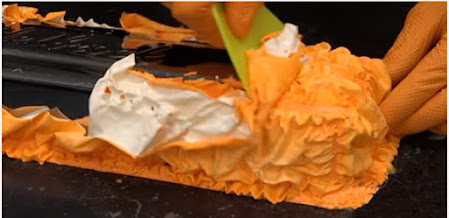How to Achieve a Professional Finish with Spray Paint
1. Choose the right spray paint
Selecting the appropriate spray paint is essential. Consider the floor fabric—metallic, wooden, plastic, or material—and pick a paint that is designed particularly for that fabric. Additionally, opt for an amazing brand with good coverage and a clean end. If the assignment calls for a specific end, consisting of matte, gloss, or steel, make sure the paint can supply that look.
2. Prepare the surface
Preparation is key to a smooth and durable finish. Follow these steps to prepare your surface:
Clean: Remove dirt, dust, and grease. For metal surfaces, keep in mind using a degreaser or alcohol wipes.
Sand: Lightly sand the floor to take away any present paint, rust, or imperfections. For metallic, use a satisfactory-grit sandpaper; for wood, a medium-grit sandpaper will suffice.
Prime: Apply a primer appropriate for the floor material. This step is mainly essential for surfaces like metallic or plastic, as it improves paint adhesion and coverage.
3. Set up your workspace
Spray painting requires a well-ventilated place to avoid breathing in fumes. Set up your workspace in a garage with the door open or outdoors on a calm day. Use drop cloths or newspapers to guard the encircling area from overspray. Additionally, wear protective tools, which includes gloves, goggles, and a mask, to shield yourself from fumes and paint particles.
4. Practice the proper spraying technique
To achieve a professional finish, mastering the spraying technique is crucial.
Shake the Can: Shake the spray paint vigorously for at least a minute to mix the paint and ensure even shade and consistency.
Test Spray: Test the spray on a chunk of cardboard or scrap fabric to get an idea of the spray pattern and flow.
Maintain Distance: Hold the can about 8–12 inches from the surface. Holding the can too close can cause drips, and protecting it too far away can bring about choppy coverage.
Smooth Strokes: Apply the paint in clean, even strokes, moving the can parallel to the floor. Start each stroke slightly off the brink of the object and launch the nozzle earlier than reaching the opposite aspect to keep away from heavy spots.
Thin Coats: Apply numerous skinny coats instead of one thick coat. This prevents drips and ensures an easy, even finish. Allow each coat to dry consistent with the manufacturer’s instructions before making use of the subsequent.
5. Finishing Touches
After the very last coat, allow the paint to dry completely. Depending on the form of paint and environmental conditions, this could take several hours or maybe some days. For durability and a sleek finish, don't forget to make use of a clean coat. This step is especially essential for items with a view to being used externally or in high traffic areas.
6. Cleaning and storage
Once your assignment is complete, ease the spray paint nozzle by turning the can upside down and spraying until the most effective, clean gas comes out. This prevents clogging and keeps the nozzle in excellent condition for future use. Store the can in a cool, dry place away from direct sunlight.
Conclusion
Achieving an expert finish with spray paint is all about practice, approach, and staying power. By following these steps, you can remodel normal items into stunning pieces with a perfect finish. Whether you're a pro DIY fanatic or a newbie, spray painting may be a rewarding and creative way to update your house and projects.




Comments
Post a Comment